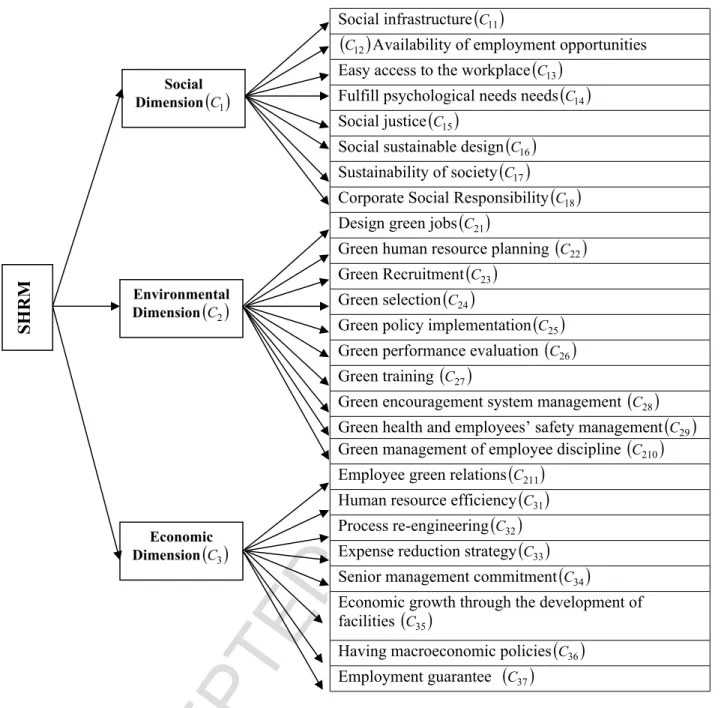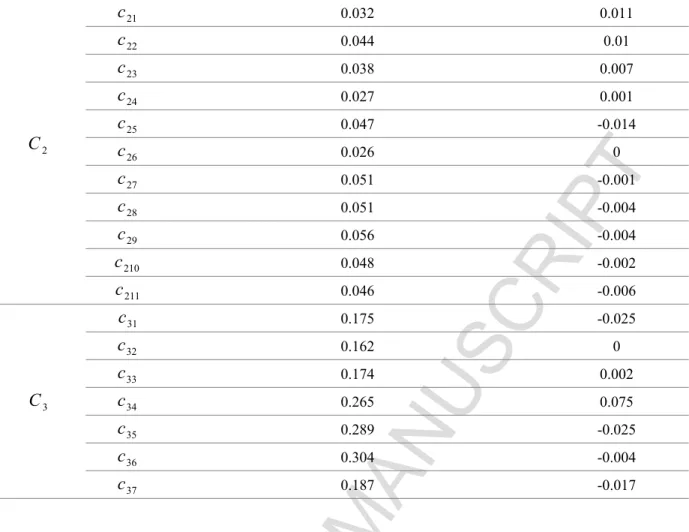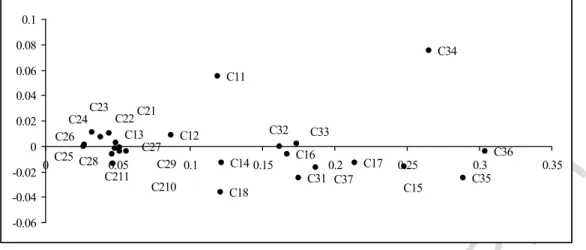Few persons can be found who have not encountered the phenomenon of human resource management, and the importance of this part of the organization is its role in optimizing expenses and improving productivity and quality (Cho et al., 2006). Two of the dimensions of social justice are the eradication of social exclusion and equitable distribution of income (Dempsey et al., 2011). However, based on the experiences of different organizations and industries, some actions have been recognized in this regard (Arulrajah, 2015; Han et al., 2013).
Employment activities can protect environmental management by providing the new employees with education in environmental culture (Han et al., 2013; Jackson et al., 2011). In contrast, there are organizations that use common criteria for selecting staff (Arulrajah, 2015; Han et al., 2013). Organizations can implement the system in two ways: financial and non-financial rewards (Arulrajah, 2015; Jackson et al., 2011).
Economic Sustainability
These companies formulate a clear set of rules and regulations to guide employees in accordance with environmental policies of an organization (Bangwal and Tiwari, 2015; Jackson et al., 2011). Employee green relations: The development of green personnel management affects employee relations and the activities relevant to the practice of union management in an organization. Employee relations and support from a trade union (Road and Kingdom, 2013) play a crucial role in the implementation of the programs and actions of environmental management in organizations (Ahmad and Nisar, 2015; Bangwal and Tiwari, 2015; Cherian and Jacob, 2012).
Some of these strategies include participatory consultation, increased sharing and recognition of the union as an important stakeholder in environmental stewardship (Arulrajah, 2015). Human Resource Efficiency: This factor includes overall quality management, employee productivity, equipment utilization efficiency, process standardization, employee involvement, increased employee motivation and skills, standardization of services, educational programs to improve employee efficiency and effectiveness and increase employees. performance appraisal (Copus and Crabtree, 1996; Youndt et al, 1996). Cost reduction strategy: including increasing revenue and minimizing damage (Hanegraaf and Biewinga, 1998; Youndt et al., 2015).
The senior management commitment to economic sustainability: to create financial value through increased income and reduced costs and to create jobs in order to strengthen the sustainability of human resources (Glaser and Diele, 2004; Tisdell, 1996). The development of facilities: set up expenditure improvement system, capital budgeting, unit monitoring and performance control as some of the factors relevant to the development of facilities (Tisdell, 1996; Vincent, 1997). Macroeconomic policy: policies affected by the economic regulations developed and implemented by the government, demands and expectations applied by the market, competitors' actions and activities as well as pressure exerted by non-governmental organizations (Copus and Crabtree, 1996; Epstein, 2009; Hanegraaf and Biewinga, 1998; Vincent, 1997).
Job security: A human resource development strategy that creates sources of income for people in the community (Basu et al., 2009; Glaser and Diele, 2004; Jha et al., 2013). With the help of a field study and a library method, the main dimensions and key factors influencing the implementation of sustainable human resource management were identified and explained in the previous chapter.
The proposed approach
Fuzzy AHP and fuzzy DEMATEL Type II, used in the study by Abdullah and Zulkifli (2015), were used to determine the cause-and-effect relationship of factors affecting the sustainable HR management implementation. AHP is a multi-criteria decision-making method to determine the weight and extent of preference of factors. AHP is a technique used for solving multi-criteria decision-making problems (Abdullah and Zulkifli, 2015; Satty, 1980).
Since uncertainty is one of the most common decision-making problems, fuzzy decision-making methods have emerged to respond to this problem (Ting, 2016). In the current research, in order to determine the weight of effective criteria for the implementation of sustainable management of human resources, hierarchical fuzzy methods are used. The pairwise comparison is constructed among all criteria in the dimensions of the hierarchy system based on the DMs' preferences in using verbal statements in Table 1 as follows matrix A,.
This method is a decision-making tool built on graph theory and helps to plan and solve problems and outline multiple criteria in the form of cause and effect to better understand the network relationship map (Gabus and Fontela, 1972). The most important feature of the multi-criteria decision-making method is the creation of relationships between agents and structure. Where the total direct effects of measure i with the most direct effects on. others, and total direct effects, which are most directly affected by criterion j.
Obtaining the total influence matrix, T. The total influence matrix, T can be obtained using Eq. 11) where I is referred to as the identity matrix. The horizontal axis vector, Di Ri called 'Prominence', shows the degree of importance that criterion i plays in the system. The vertical axis Di Ri; called 'Relationship' shows the net effect that the criterion I contributed to the system.
Structural correlation analysis
When Di Ri is positive, criterion i is a net causer and when Di Ri is negative, criterion i is a net receiver (Abdullah and Zulkifli, 2015).
Attaining the total-influence matrix,
Calculate expected value, E(W)
Research Results
According to the factors identified in the first stage, the hierarchical tree was drawn as shown in Fig. Aggregate matrix of expert pairwise comparisons: the expert pairwise comparison matrix is aggregated using equation (2). Matrix of pairwise comparisons related to the dimensions of sustainable human resource management.
Calculate the total weight of the indices: based on equation (5), we determined the normalized weight of the criteria that affect the implementation of sustainable human resource management, based on table 5. Create the initial matrix of direct relationships (A): After the weights of the indices were finally obtained, prepared a questionnaire relevant to the degree of influence of an individual indicator on other indicators was distributed among experts, and after the collected expert opinions and with the help of Table 6, the verbal data were converted into trapezoidal types of 2nd fuzzy numbers, and then we determined the basic matrix using equation (7) direct links. For example, Table 7 presents the primary matrix of direct relationships associated with the dimensions.
The primary matrix of the direct relationships relevant to the dimensions that influence human resources for sustainable success. Table 8, shows this matrix for the dimensions that influence the success of sustainable human resources. Initial normalized matrix of the direct relationships of the dimensions influencing the success of sustainable human resources.
The matrix of the total relationships for a successful implementation of sustainable human resources management is shown in Table 9. Based on the above relationship, the total relationship matrix of the indices was determined in the form of a 26×26 matrix. Analyze the Causal Relationships: The total number of rows and columns to obtain an analysis of the causal relationships was calculated.
Design Causal Diagram: The causal diagram for the dimensions and criteria of the success of the implementation of sustainable human resource management in small and medium-sized industries in Kerman province is shown in Figures 3 and 4.

Discussion
Regarding social dimension, indicators of social infrastructure, availability of jobs and easy access to the workplace - due to the positivity of D-R values - are effective indicators and realization of psychological needs, social justice, sustainable social design, sustainability of society and corporate social responsibility - due to the negativity of D-R values - are impressive indicators. Regarding social dimension, the maintenance and improvement of the welfare of current and future generations must be taken into account (Chiu, 2003) and necessary grounds must be provided to improve the quality of working life and also to eliminate social gaps and inequalities (Enyedi, 2002). ). Managers and organizations must provide the necessary social infrastructure to the human resources to enable them to access employment opportunities.
Regarding the environmental dimension, the indicators of green site design, green human resource planning, green recruitment, green selection and green performance evaluation - due to the positivity of D-R values - are effective indicators and the implementation of green education, green incentive system management, green staff health and safety management, green staff discipline management, green staff relations and human resource efficiency - due to the negativity of D-R values - are impressive indicators. Environmental human resource management acts as an infrastructural factor and pro-environmental organizations must pay special attention to environmental human resource management in order to develop the economic and social aspects of their human resource management. In this direction, in the selection and recruitment system, standards should be defined to avoid the recruitment of employees who do not care about the environment.
After institutionalizing green work design, green selection, green hiring and green performance evaluation in an organization, the organization will provide environmental protection training and managers should consider standards in this regard to encourage employees to carry out environmentally friendly measures. In this case, relations with employees will also be developed based on these eco-friendly measures. Regarding the economic dimension, indicators of re-engineering of business processes and strategies dedicated to reducing the costs of senior management - due to the positivity of D-R values - are effective indicators and economic growth through the development of facilities, macroeconomic policies and guaranteed employment - due to the negativity of D-R values - are impressive indicators.
Regarding this dimension, economic sustainability is achieved by saving valuable resources for future generations; it is indeed the implementation of the principle of fair and equal distribution between generations. Economic sustainability is related to cost reduction and economic benefit results from better management of resources and efficiency of processes (Munasinghe, 1993); therefore, special attention should be paid to some factors such as business process re-engineering.
Conclusion
Integration of fuzzy AHP and DEMATEL fuzzy type-2 interval: An application for human resource management. Asymmetric outcomes: assessing central aspects of biological, economic and social sustainability of a mangrove crab fishery, Ucides cordatus (Ocypodidae), in North Brazil. Understanding the impact of employee involvement on organizational productivity: The moderating role of organizational commitment.
Cleaner production, environmental sustainability and organizational performance: an empirical study in the Brazilian metalworking industry.

